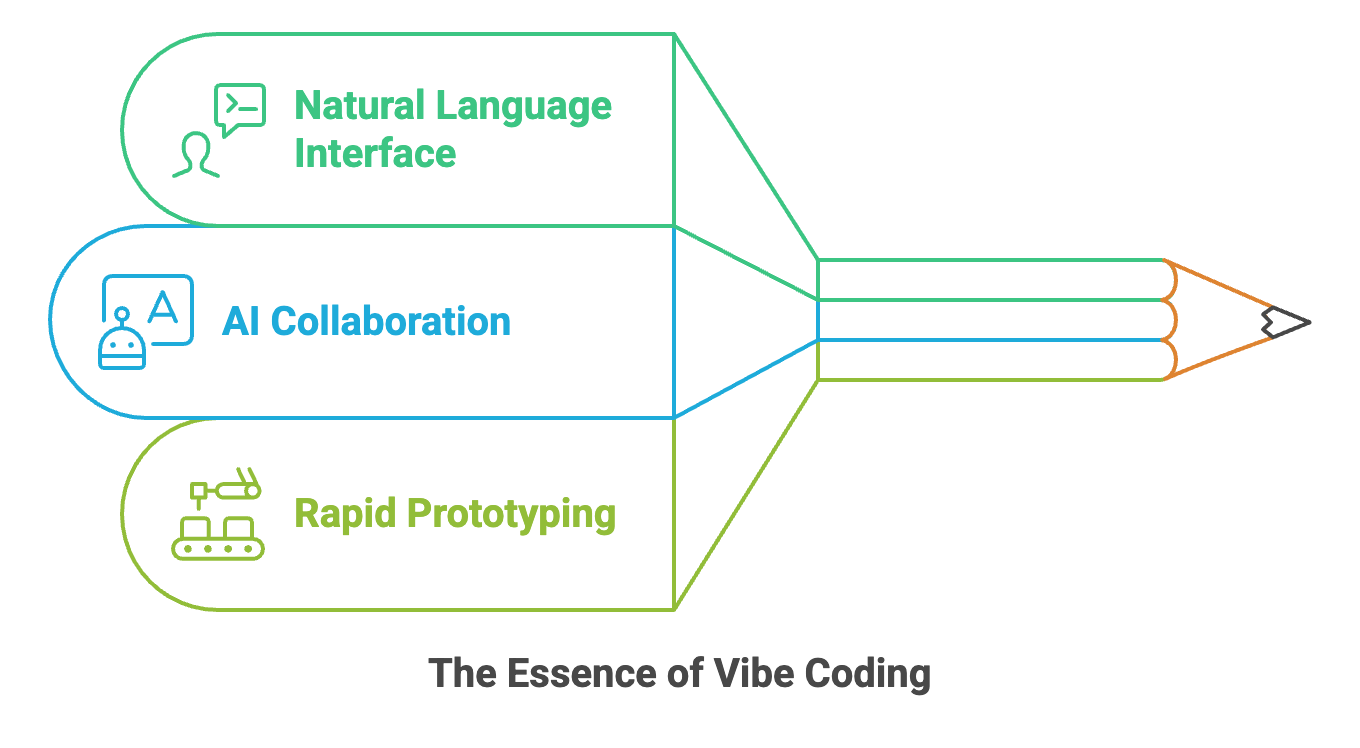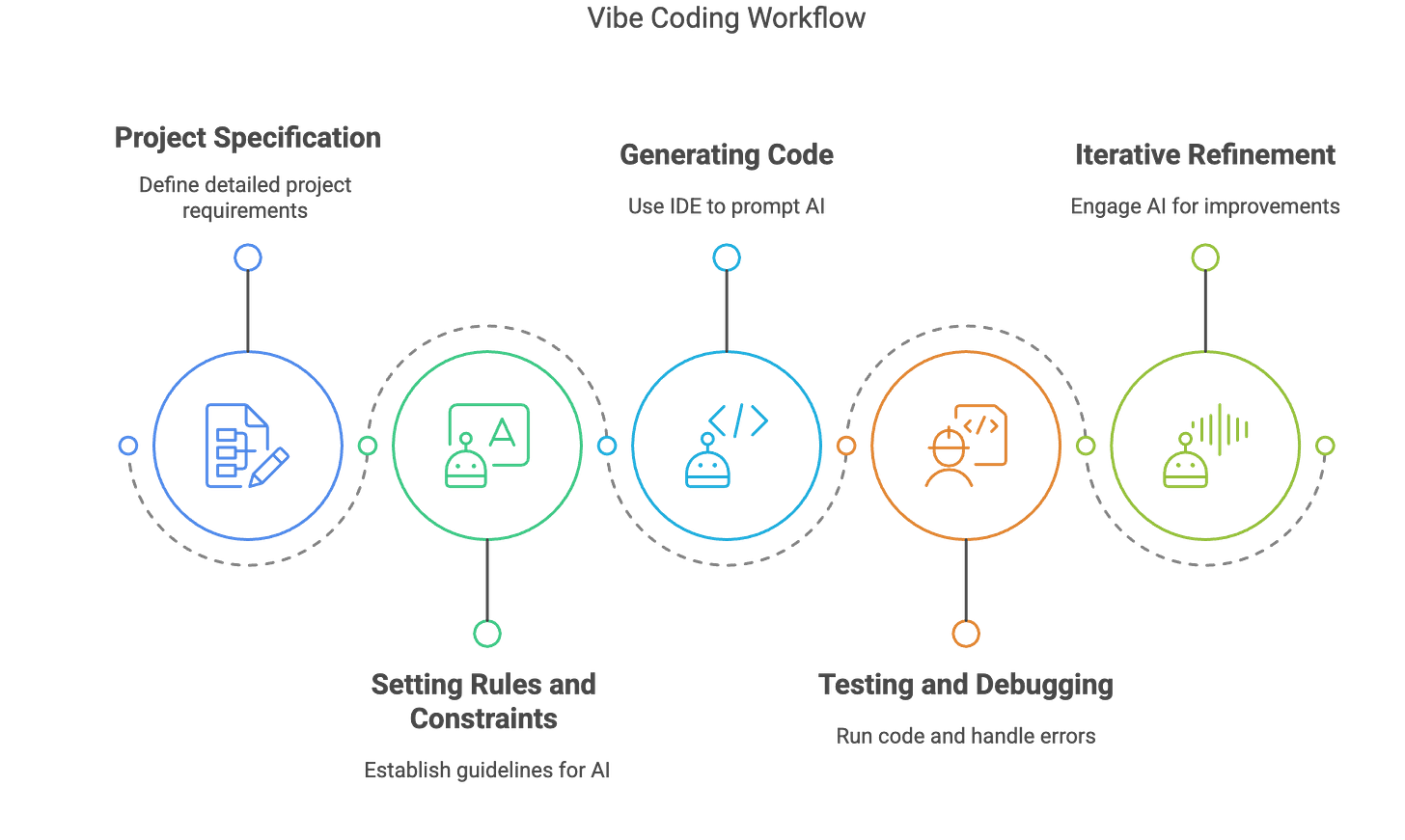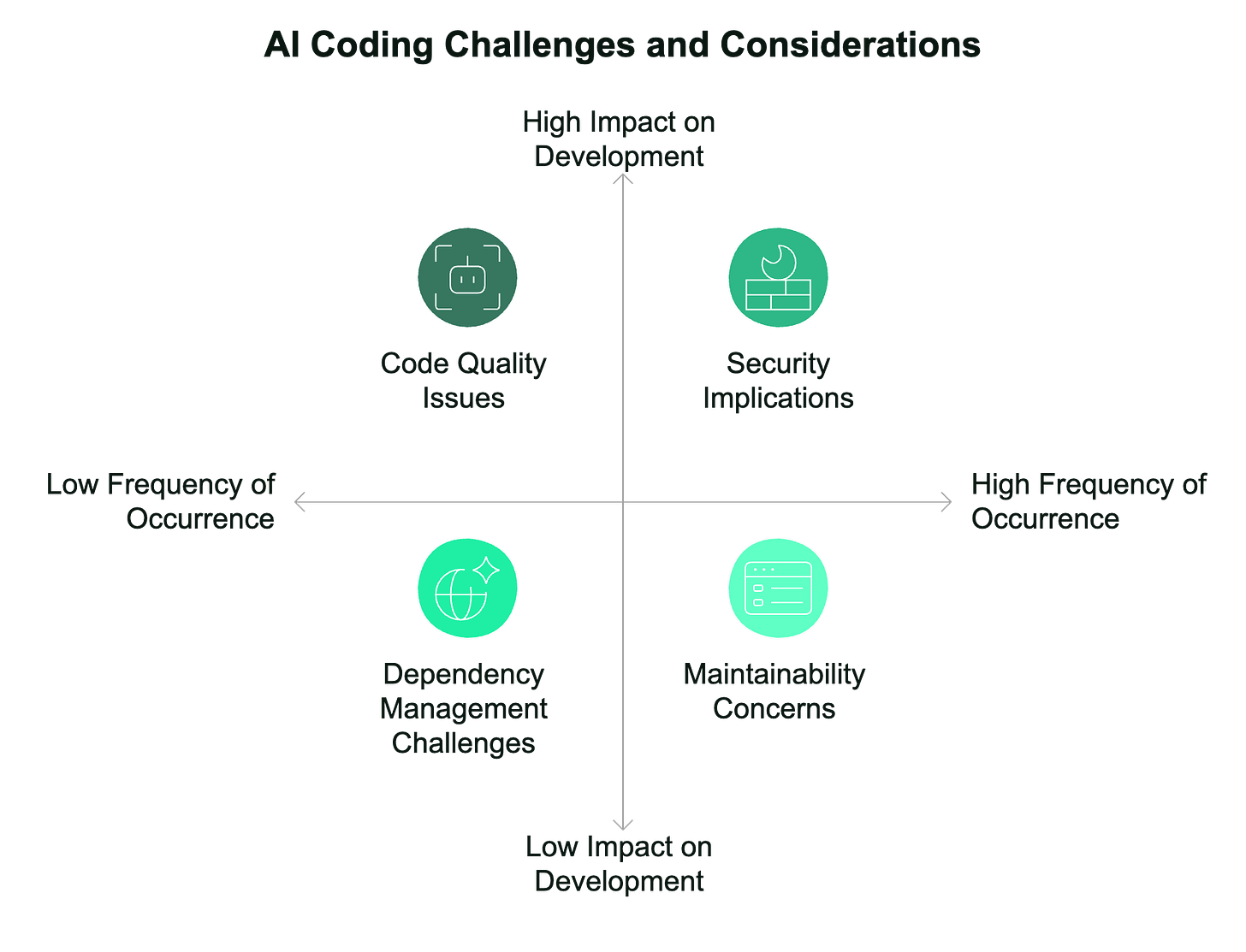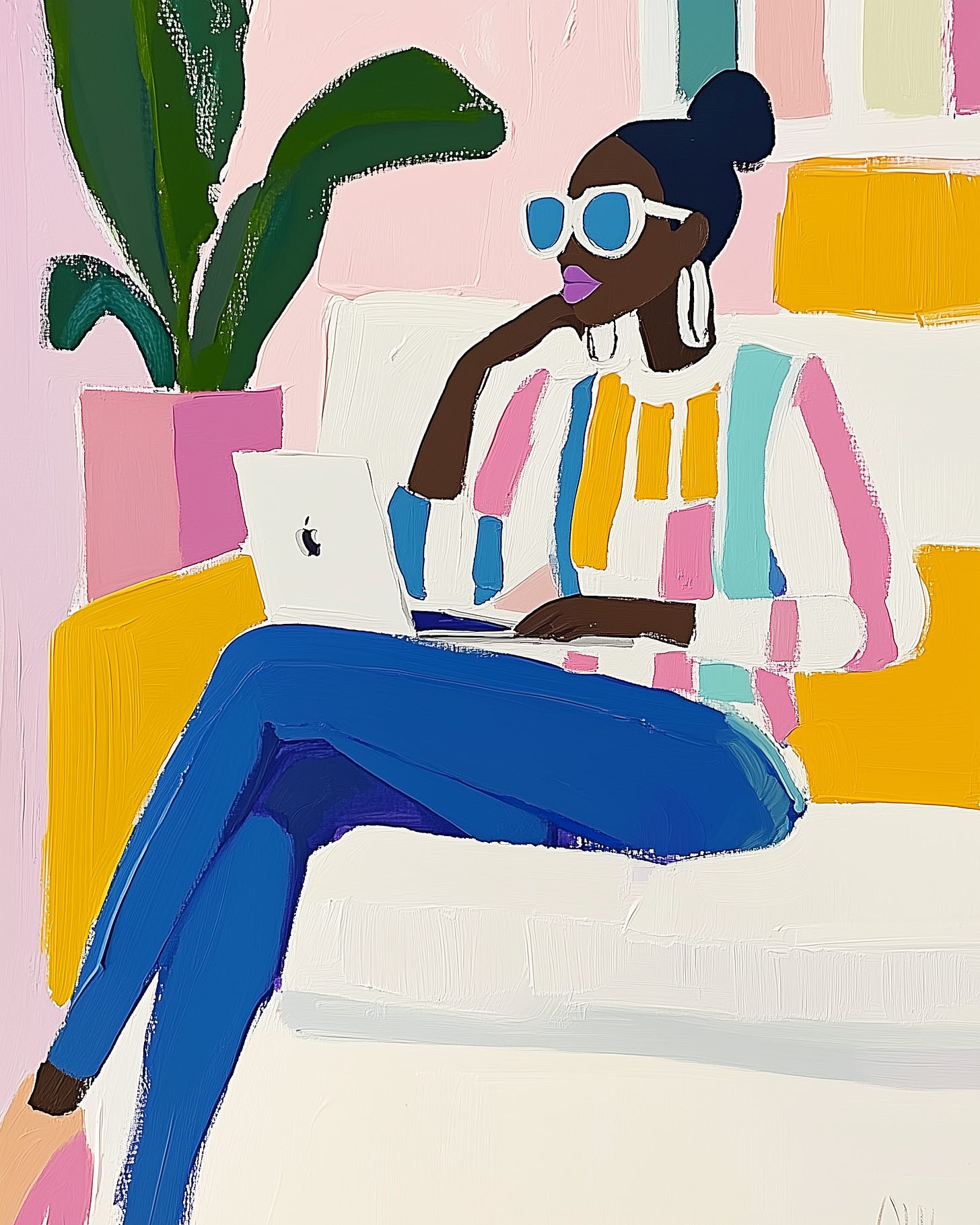"It's not really coding - I just see things, say things, run things, and copy-paste things, and it mostly works." — Andrej Karpathy
As an experienced technologist who's witnessed countless development paradigms come and go, I've become somewhat skeptical of "revolutionary" approaches. But sometimes, something genuinely transformative emerges that makes me sit up and take notice. Vibe coding is one such paradigm shift that I believe will fundamentally change how we build software.
What Is Vibe Coding, Really?
Introduced by Andrej Karpathy (former AI leader at Tesla and co-founder of OpenAI) in February 2025, vibe coding represents a radical departure from traditional development. Rather than meticulously writing code line-by-line, developers describe what they want to build in natural language, and AI tools generate the implementation.
Karpathy's description captures the essence perfectly: "fully giving in to the vibes, embrace exponentials, and forget that the code even exists." In his workflow, he uses voice recognition technology like SuperWhisper to communicate with AI assistants, letting them handle the technical details while he focuses on the creative vision.
As he puts it: "It's not really coding - I just see things, say things, run things, and copy-paste things, and it mostly works."
The Three Pillars of Vibe Coding
At its core, vibe coding stands on three fundamental principles:
Natural Language Interface: Instead of memorizing syntax and programming languages, developers communicate with AI tools in plain English. This democratizes software development, making it accessible to those without formal technical training.
AI Collaboration: Tools like Cursor, Replit, and Windsurf serve as intelligent coding assistants that generate code, offer suggestions, and help debug issues based on natural language inputs.
Rapid Prototyping: By focusing on functional solutions rather than perfect code, vibe coding excels at quickly transforming ideas into working prototypes. This allows creators to test concepts and build MVPs without extensive development resources.
My Experience Diving Into the Vibe
When I first tried vibe coding, I was admittedly skeptical. After years honing my coding expertise, the notion of "surrendering to the flow" of AI-generated code seemed counterintuitive. However, my experiences quickly changed that perception.
My initial venture into vibe coding involved Claude Code. I created a snake game featuring two AI-driven snakes, which intriguingly evolved to the point of initiating communication with each other. Encouraged by this success, my second project was developing a landing page for Junior Williams, leveraging GitHub for version control, ultimately iterating through 83 distinct revisions.
The third and most ambitious project began as a Python script designed to extract transactions from multiple bank and credit card statement PDFs. I then built an intuitive frontend allowing users to efficiently classify transactions as either business or personal.
Across these projects, what stood out most was not merely the accelerated development pace but the innovative approaches and enhancements AI provided, often suggesting improvements and details I might otherwise have overlooked.
The Workflow That Changed Everything
The vibe coding workflow is remarkably consistent regardless of your operating system:
Project Specification: Be detailed about what you want to build. Instead of saying "build a Twitter clone," specify "Create a Twitter clone with login functionality, tweet posting capabilities, and a responsive design."
Setting Rules and Constraints: Establish clear guidelines for the AI to follow, such as preferred programming languages, frameworks, or design principles.
Generating Code: Use your chosen IDE to prompt the AI based on your specifications.
Testing and Debugging: Run the code and if errors occur, simply copy them back to the AI without additional explanation.
Iterative Refinement: Continue the conversation with the AI to add features or resolve bugs.
Beyond the Hype: Real Considerations
Despite its promise, vibe coding isn't without challenges. As someone who values code quality and security, I've identified several considerations:
Code Quality: AI-generated code can sometimes be overengineered or include unnecessary dependencies. Regular code reviews remain essential.
Security Implications: LLMs have limited understanding of security best practices. For cybersecurity applications, careful validation and testing are critical.
Dependency Management: AI tools sometimes introduce dependencies that can create compatibility issues or security vulnerabilities.
Maintainability: Without understanding the generated code, long-term maintenance becomes challenging. I recommend at least reviewing the architecture, even if you don't scrutinize every line.
The Future Is Already Being Rewritten
The impact of vibe coding is already evident. Y Combinator reported that 25% of startups in its Winter 2025 batch had codebases that were 95% AI-generated. This democratization of software development is enabling a new wave of creators who previously couldn't translate their ideas into functional applications.
As Andrew Chen predicted, "trad UX and design standards [may] give way to post-modern/fragmented software, as millions of new vibe coders create experiences with no prior know-how and new perspectives."
Finding Balance in the New Paradigm
As with any technological shift, the key lies in finding balance. I've integrated vibe coding into my workflow without abandoning the skills and principles that make for robust, secure software. I use AI to accelerate development but maintain oversight on architecture, security, and quality.
The most powerful approach combines the efficiency of vibe coding with the wisdom of experienced development principles. The code may be generated by AI, but the vision, direction, and quality standards remain firmly in human hands.
Whether you're a seasoned developer or someone with innovative ideas but limited coding experience, vibe coding represents an opportunity to build faster and more creatively than ever before. The question isn't whether to embrace this paradigm but how to do so thoughtfully.
The Essential Toolkit for Vibe Coding
Whether you're on Mac or Windows, these tools will get you started with vibe coding:
Code Editors and IDEs
Cursor
An AI-powered code editor built on Visual Studio Code, enhanced with AI capabilities. Cursor understands your codebase, suggests improvements, and generates code from natural language prompts.
Windsurf
An AI-powered IDE designed to enhance your coding workflow through agentic coding features like Cascade and multi-file editing.
Replit
A browser-based IDE featuring Replit Agent, an integrated AI assistant capable of generating code, setting up environments, and deploying applications directly from natural language prompts.
v0 by Vercel
Generative AI tool by Vercel that quickly creates responsive web applications from text prompts or mockups, ideal for rapid prototyping.
Lovable
An AI pair programmer designed to understand your coding style and help produce maintainable, readable code efficiently.
AI Models and Assistants
ChatGPT
OpenAI's generative AI chatbot capable of writing code, answering technical queries, debugging assistance, and iterative refinement through conversational interaction.
Anthropic Claude
Anthropic's advanced AI assistant known for its strong capabilities in summarization, creative writing, coding assistance, and complex workflow management.
Claude Code
An experimental coding-focused AI model by Anthropic designed specifically to assist developers with complex programming tasks. Currently accessible via waitlist.
Supplementary Tools
SuperWhisper
AI-powered voice recognition technology optimized for accurate spoken communication with AI coding assistants, enhancing hands-free development workflows.
Wispr Flow
Voice dictation tool leveraging advanced AI to convert spoken words into formatted text instantly, significantly accelerating document creation and editing tasks.
Join the conversation—share this article with your network and let’s shape the future of vibe coding together!






